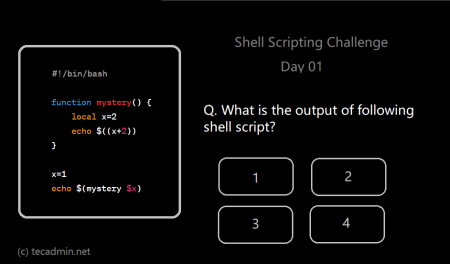Bash is a popular command-line shell used in Linux and Unix operating systems. One of the most useful commands in Bash is printf, which allows users to format and print text in various ways. In this article, we will provide an overview of the Bash printf command and offer a basic usage guide.
Overview of Bash printf Command
The printf command is used to format and print text in Bash. It allows users to specify the format of the output, including the width of the output, the number of decimal places, and the alignment of the text. The syntax for the printf command is as follows:
1 | printf format [arguments] |
Here, the format string specifies the format of the output, and the arguments are the values to be printed. The format string can contain special format specifiers that are replaced by the corresponding argument values. The most commonly used format specifiers are:
- %s: String
- %d: Decimal integer
- %f: Floating-point number
- %e: Scientific notation
- %x: Hexadecimal number
- %c: Character
Basic Usage of Bash printf Command
Let’s look at some basic usage examples of the printf command in Bash.
Example 1: Printing a String
To print a string using the printf command, use the %s format specifier. For example:
printf "%s\n" "Hello, world!"
This will print the string “Hello, world!” followed by a newline character.
Example 2: Printing an Integer
To print an integer using the printf command, use the %d format specifier. For example:
printf "%d\n" 42
This will print the integer value 42 followed by a newline character.
Example 3: Printing a Floating-Point Number
To print a floating-point number using the printf command, use the %f format specifier. For example:
printf "%f\n" 3.14159
This will print the floating-point value 3.14159 followed by a newline character.
Example 4: Formatting Output
To format the output using the printf command, use the various options available for the format string. For example, to specify the width of the output, use the %Ns format specifier, where N is the width of the output. For example:
printf "%10s\n" "Hello"
This will print the string “Hello” with a total width of 10 characters, padded with spaces on the left.
Example 5: Using Escape Sequences
Escape sequences are special characters that are used to represent non-printable characters or special characters in the output. Bash supports a wide range of escape sequences, including newline, tab, and backspace. To use an escape sequence in the printf command, use the backslash character () followed by the sequence. For example:
printf "Hello\tWorld!\n"
This will print the string “Hello” followed by a tab character and the string “World!” on a new line.
Example 6: Padding and Alignment
Padding and alignment are important features of the printf command that allow you to control the width of the output and align text to the left, right, or center. To specify the width of the output, use the %Ns format specifier, where N is the width of the output. For example:
printf "%10s\n" "Hello"
This will print the string “Hello” with a total width of 10 characters, padded with spaces on the left.
To align text to the left, use the – character before the width specifier. For example:
printf "%-10s\n" "Hello"
This will print the string “Hello” with a total width of 10 characters, padded with spaces on the right.
To center-align text, use the ^ character before the width specifier. For example:
printf "%^10s\n" "Hello"
This will print the string “Hello” with a total width of 10 characters, centered.
Example 7: Formatting Tables
The printf command can be used to format tables of data by using multiple format specifiers in the format string. For example, to format a table with two columns, one for a name and one for an age, use the following format string:
printf "%-10s %3d\n" "Alice" 25printf "%-10s %3d\n" "Bob" 30
This will print a table with two rows, one for Alice and one for Bob, with their respective ages aligned to the right.
Example 8: Using Color Codes
Bash supports color codes that can be used to add color to the output. To use color codes in the printf command, use the \033 sequence followed by the color code. For example, to print the string “Hello” in red, use the following command:
printf "\033[31mHello\033[0m\n"
This will print the string “Hello” in red.
Example 9: Using Variables
The printf command can be used with variables to dynamically generate output. For example:
name="Alice"age=25printf "%-10s %3d\n" $name $age
This will print the name and age of the variable name and age with the corresponding format specifiers.
Conclusion
The Bash printf command is a powerful tool for formatting and printing text in various ways. It allows users to specify the format of the output and offers various options for controlling the width, alignment, and precision of the output. By mastering the printf command, users can improve the readability and usability of their Bash scripts and command-line tools.

1 Comment
On example #2, I think the output for Closed Points should be 21 and not 65.